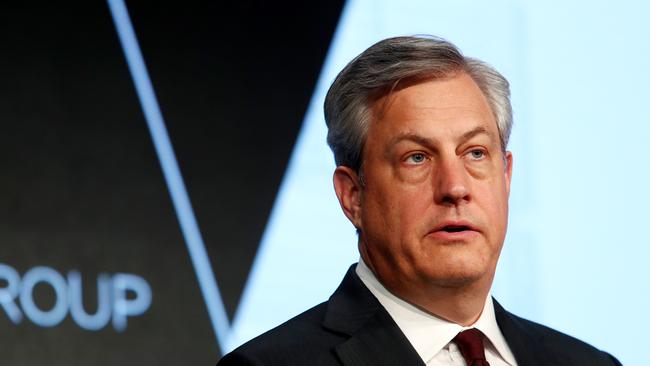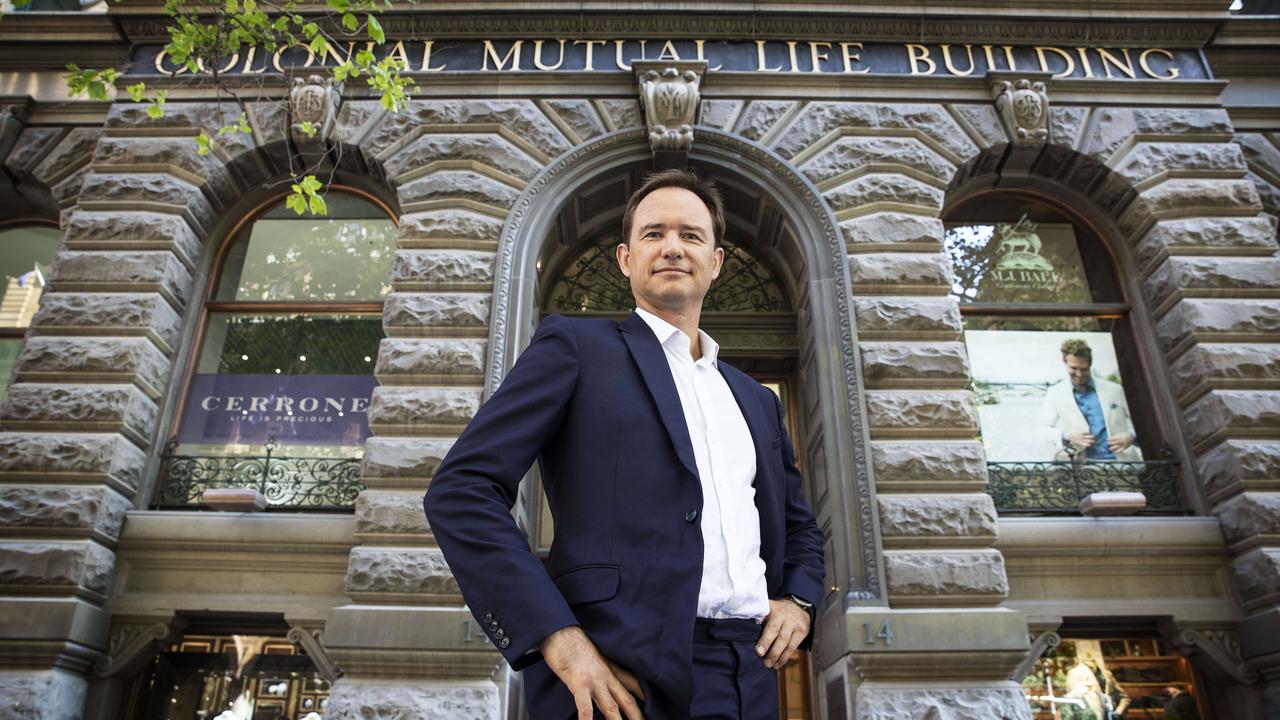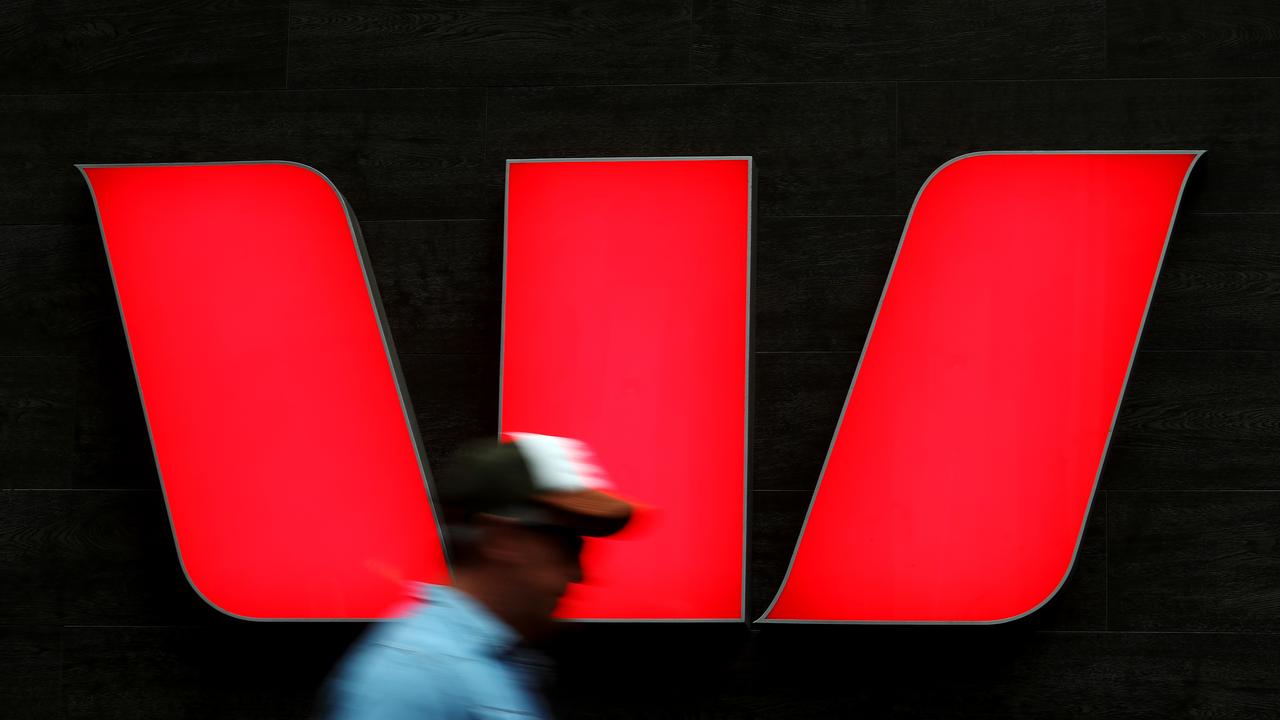Westpac’s out-of-cycle rate hike aimed at lifting falling margin
Westpac has risked a firestorm of anger with its out-of-cycle rate hike, but it’s part of a strategy to improve its net interest margin.
Westpac has risked a firestorm with its out-of-cycle rate hike, but yesterday’s announcement was the final instalment in a carefully planned, multi-stage strategy to try and denuclearise a recovery in the bank’s net interest margin.
The penultimate step came last Friday, when chief executive Brian Hartzer used the cover of a Pillar 3 report to reveal the June-quarter margin had collapsed by 11 basis points to 2.06 per cent.
By then, there was no going back — the stock fell like a stone and the scene was set for Hartzer to resuscitate the margin with a 14 basis-point rise in variable mortgage rates.
Westpac is believed to have thought long and hard about the move, knowing that the level of scrutiny on the industry is immense.
“But I have to run the business for the long term,” Hartzer told Four Pillars.
On CLSA analyst Brian Johnson’s numbers, the rate hike will add 5 basis points to Westpac’s margin and a very welcome $429 million to pre-tax earnings.
The initial response from Canberra was muted.
Westpac is fortunate to be dealing with a days-old government and a new Treasurer in Josh Frydenberg.
A former energy minister and financial services minister, Frydenberg said the onus was on the bank to explain to borrowers why they will be facing higher costs.
“Any financial institution which makes these decisions needs to explain to its customers why,” he said.

On Tuesday, this column said the commercially rational thing for the big four to do was to follow the lead of their smaller peers and adjust mortgage rates to take account of higher short-term wholesale funding costs.
The bank bill swap rate — a key wholesale funding rate for mortgages — surged by about 25 basis points between February and March.
It’s fallen back but the BBSW remains elevated.
Westpac said yesterday that the 14 basis-point increase would not fully recover those costs.
While Commonwealth Bank, National Australia Bank and ANZ Bank might delay their own rate increases, it’s only a matter of time before they fall into line because they’re all feeling the pinch from irresistible capital-market forces.
One factor behind the elevated BBSW, according to the Reserve Bank, has been reduced demand for bank bills from investment funds and the big US platform companies, which until recently held their surplus cash offshore.
The Trump administration’s move to slash corporate tax rates has resulted in the repatriation of those funds, which are no longer available for investment in Australian bank paper.
Investment funds have also switched their asset allocation from bills to global equities.
“This reduction in demand appears to have contributed to the increase in BBSW rates and has been accompanied by the major banks reducing their issuance since late 2017,” the RBA said earlier this month.
“Meanwhile, bill issuance by other banks, including foreign banks operating in Australia, has increased.”
Finally, the cost of raising funds in the US, in US dollars, and then converting those funds into local dollars in the swap market has increased, and at times has been well above the cost of raising funds domestically.
It’s a cocktail of factors, but overwhelmingly they’re negative.
Word on the street
A quick scan of any major bank chief executive’s diary would reveal the horror that’s about to unfold for the remainder of this year.
It kicks off next month with royal commissioner Ken Hayne’s interim report, due by September 30, takes in the CEO appearances before the House economics committee in October, and concludes with a November grilling by Hayne and his senior counsel assisting.
In fact, the only upside in a grim farewell to 2018 is that Hayne’s interim report will consider the first four rounds of hearings. His assessment of the superannuation industry, which is likely to be brutal, will form part of the final report due in February.
Hayne’s scheduling means a reprieve for National Australia Bank, which was the commission’s main target in this month’s super round.
While CEO Andrew Thorburn might be thankful for small mercies, the word on the street is that any celebration would be premature.
That’s because NSW Police’s Strike Force Napthali, established to investigate fraud allegations against a senior NAB executive and an external events company, is likely to consider its next steps before the end of the year.
Sensational claims emerged in April that the executive had teamed up with the events company to overcharge NAB and pay kickbacks to the scheme’s participants.
Thorburn, who had worked in proximity to the executive, was rocked by the allegations.
The events company organised lavish offsites for the bank’s leaders in far-flung locations including Dubai and Mumbai.
One executive said that he and about 125 colleagues attended the Mumbai shindig in 2008, as the financial crisis was closing in and well before Thorburn’s tenure.
The event was held at the luxury Taj Mahal Palace Hotel several months before the hotel was attacked by terrorists.
“People flew in from around the world — from the Clydesdale business in the UK and Great Western in the US,” he recalled.
“We all stayed in suites for three days. It was quite splendid, thanks.”
Fond memories indeed, but not so much for NAB’s new generation of leaders.
gluyasr@theaustralian.com.au
Twitter: @Gluyasr



To join the conversation, please log in. Don't have an account? Register
Join the conversation, you are commenting as Logout